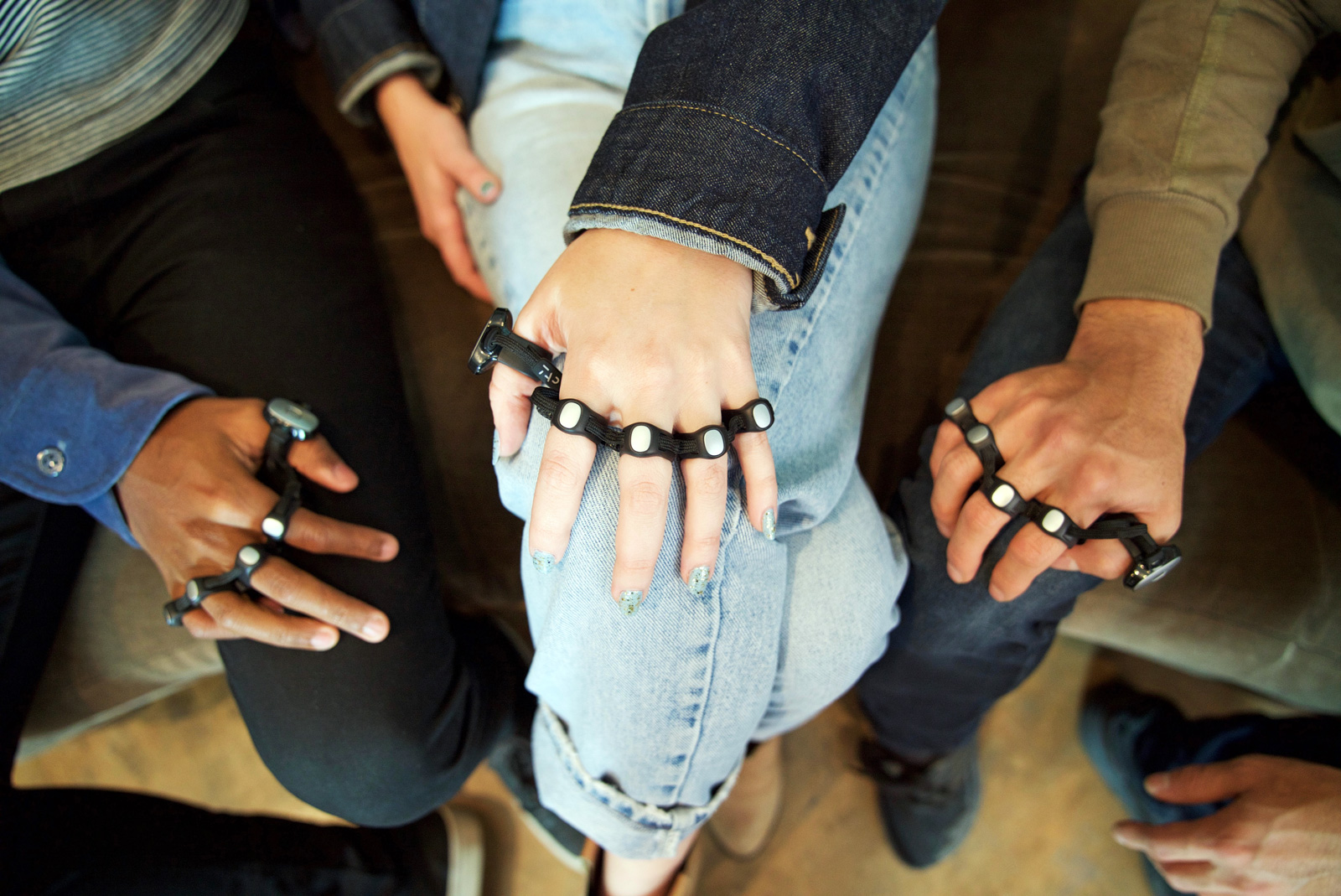
I've just discovered the joy of using a chorded keyboard in the form of Tap, which is a set of rings that read your finger gestures and assigns them to a specific letter or number. It's only been on the market for less than a year and it's already picking up steam to become a major player in the alternative keyboard community. Thanks to the recent update, which includes support for VoiceOver controls, it's also poised to be a superior replacement for a tactile keyboard for the visually impaired.
I recently sat down with Tap's creator and co-founder power-couple Sabrina Kemeny and Dovid Schick. They explained to me how Tap works, let me try out some of the rudimentary lessons, and showed off Tap being used as a controller while VoiceOver was enabled on an iPhone.
The idea behind Tap is to allow people to have a discrete way to text or type when you don't have access to a physical keyboard or are not able to use the on-screen digital one. It replaces the talk-to-text feature on mobile devices.
"Voice is really only used by about one in five people, and the reasons are; it's not discrete, it works great, but when it doesn't work correcting it is really difficult to fix, and it's not good for discrete commands," said Schick.
With a new update to the Taps Manager companion app, available today, users will be able to control some navigation features on their iPhones using VoiceOver. "We're launching a set of taps that are mapped to the most common VoiceOver commands on iOS," said Kemeny.
With VoiceOver on, a person would typically tap or swipe on their iPhone screen, which would trigger the accessibility feature to speak out loud what has been selected. Using Tap, you wouldn't have to take your iPhone out of your pocket or otherwise have it in your hand if you wanted to navigate the Home screen and hear which app you've selected.
Master your iPhone in minutes
iMore offers spot-on advice and guidance from our team of experts, with decades of Apple device experience to lean on. Learn more with iMore!
"Wherever possible, we use similar or common sense taps to represent gestures. So if you're trying to swipe left, we have you tap with your left three fingers," said Kemeny.
Tap also has an SDK so developers can create any number of possible control schemes to support it. We're talking video games, set-top box media controls, and even AR and VR headsets.
"People are starting to wear more VR, AR, and smartwatches. Even if you have a phone that's the sort of brain of the operation, you want to leave that phone in your pocket. If you have Tap, then you have everything. So now you're wearing your screen and you have your language input," said Kemeny.
The possibilities are only limited by whether developers get on board with Tap, which they should.
Tap has a huge potential to be a replacement keyboard the visually impaired community could use instead of having to whip out a physical keyboard every time they want to send a text message but aren't in a convenient location to use the talk-to-text feature.
Wouldn't it be great to have the option to tell your partner you love them without having everyone on the bus hear what you're texting?
Sabrina and Dovid loaned me a Tap to test out for myself. I haven't had time to get any amount of training in, but I'll be sure to provide a full review as soon as possible.
In the meantime, if you're an alternative keyboard nerd, like the idea of a wearable keyboard, or have vision impairment and want to be able to type without needing a full keyboard, take a look at Tap. It's available on Amazon for $179.
Lory is a renaissance woman, writing news, reviews, and how-to guides for iMore. She also fancies herself a bit of a rock star in her town and spends too much time reading comic books. If she's not typing away at her keyboard, you can probably find her at Disneyland or watching Star Wars (or both).


